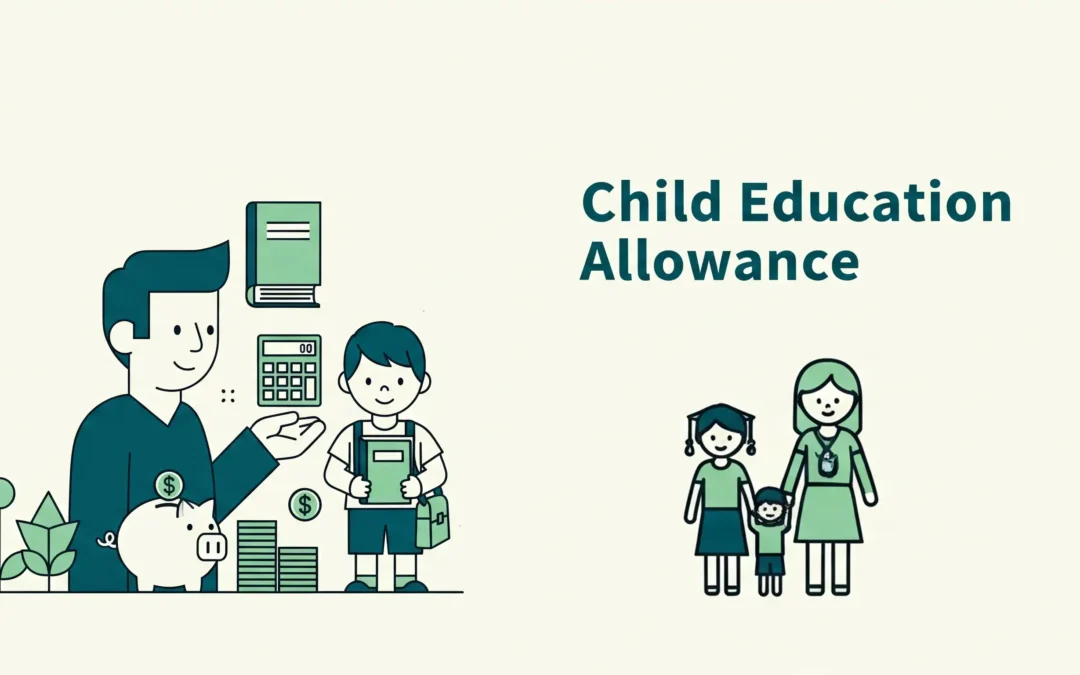The government of India offers various relaxations for its employees. They are offered reimbursement for many expenses. One such allowance is the child education allowance (CEA). It is given to provide financial help and promote basic education for children of their employees. However, the employees must meet the eligibility criteria to file for it, which are listed below.
This article will help you understand the meaning of CEA, the amount that is exempted, the procedure to claim it, and what expenses are covered under it. It is important to note that to become eligible, both employees and children have to meet the listed requirements.
What is Child Education Allowance (CEA)?
The Central Government reimburses its employees financially to help with the cost of their children’s education through the Child Education Allowance (CEA). This allowance, which was created to lessen the burden of school expenses, covers tuition as well as other necessities like books and uniforms, and supports education from nursery to Class 12.
Key Features:
- It is allowed for two children per employee.
- The set amount is Rs. 2,250 per month for each child, or Rs. 27,000 annually, as per the latest government rules. This allowance is provided for up to two children.
- If the child stays in a hostel, a monthly hostel subsidy of up to Rs. 6,750 per child is available, as specified in the 7th Pay Commission guidelines.
- Claims for reimbursement must be filed with the appropriate receipts within the given time period.
- It is applicable only if the child is enrolled in an accredited school.
Eligibility and Conditions to Claim CEA
The Child Education Allowance is mainly provided to Central Government employees, but depending on their internal policies, other organisations, such as PSUs or the armed forces, may provide comparable benefits. However, in order to be eligible for the allowance, specific requirements must be fulfilled; simply being an employee is not sufficient.
Who is Eligible?
- Permanent employees of the Central Government.
- State government employees who are delegated or working for the central government.
- It is available to both male and female employees, but only one parent can claim it per child, not both.
- People who are part-time or contract-based are not eligible for the same.
Requirements
- The child must be enrolled in an accredited school or other educational establishment.
- Only the two oldest surviving children are eligible to receive the allowance.
- Exception: All twins (or triplets) born from the second birth are deemed eligible.
- There is no minimum age to claim CEA, but the maximum age for claiming the allowance is 20 years or until the child passes class 12, whichever comes earlier. (Some sources mention 22 years for special cases, but the standard limit as per official memoranda is 20 years.)
- From nursery to the twelfth grade, the child must be enrolled in a school.
- A certificate from the organisation verifying residential stay is required when claiming hostel subsidies.
- Homeschooling, private coaching, and distance learning are not included.
Which Costs Are Included?
- Fees for tuition
- The price of notebooks and textbooks
- Shoes and uniforms
- The charge for the school-provided transport facility.
- The extra fees for things like the lab and library that are charged by the school.
How to Claim CEA?
As long as you have your documentation ready and follow a few instructions, claiming the Child Education Allowance is quite easy. It is typically claimed annually, though this can change based on your department’s or organization’s policies.
Steps:
- To claim CEA, get the school’s original fee receipts.
- Get a legitimate certificate from the school attesting to the child’s enrolment and consistent attendance.
- Complete the CEA reimbursement form, which is typically available from your finance or HR department.
- Include supplementary documents, like:
- Receipts for fees
- Evidence of purchase for uniforms and books, if any
- Certificate of hostel accommodation (if hostel subsidy is claimed)
- Send it in on time to the accounts/human resources department.
Bottomline
The conclusion can be drawn that providing children education allowance is one of the perks that government employees receive. This reduces the cost of education that parents have to bear up to the age of 20 years or until the child completes class 12, whichever comes earlier. This enables parents to save for their higher education or use this amount in a better way.
However, it is important to note that, as specified earlier, all the eligibility criteria must be fulfilled, and only one parent can claim it if both mother and father are government employees.


